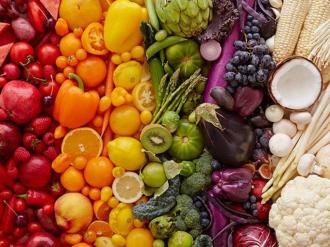News Taffy
| Post Your News Send Us An Event Start A Gallery |  |
| Most Recent | Most Popular | Top Contributors | Galleries | Events |
 | Contributor: admin subscribe to my stories |
 The Cardiologist's Wife - Put Some Color Into Your Food While driving through Jonesboro yesterday, I noticed a fast food billboard. All the food in the picture was brown. Brown French fries, brown chicken nuggets, brown hamburger. Frankly, it looked disgusting to me and I was disturbed because brown is the predominant color of the diet of many Americans. This is sad because if the food you eat on a daily basis is all brown, or worse, artificially colored, you are missing out on vital nutrition. The healthy foods you should be eating come in a variety of vibrant colors - think green asparagus, red cherries, pink grapefruit, orange bell peppers. The foods we should be eating contain many nutrients and phytonutrients our bodies need to function optimally. The color of the food is an indication of what nutrients are in the food because phytonutrients are what gives fruits and vegetables their color. Phytonutrients help us fight infection, improve brain function and keep skin healthy among other things. The following guide will help you understand some of the nutrients that are associated with certain colors. White foods like garlic, onions, mushrooms and cauliflower contain many phytonutrients like allium, vitamin C and selenium which lower our risk of heart disease and some cancers and help lower high blood pressure and high cholesterol. Yellow and orange foods like carrots, pumpkin, sweet potatoes, lemons, cantaloupe, mangos, summer squash, corn and yellow beets have high levels of beta carotene and vitamin C. These nutrients are good for our vision, lower LDL cholesterol, boost our immune system and lower blood pressure. Red foods like tomatoes, watermelon, red peppers, raspberries, red cabbage, apples and cranberries are full of lycopene. Lycopene helps protect cells from damage and can prevent or slow down the progression of cancer. Lycopene also helps lower your risk from developing heart disease and Alzheimer’s. Green vegetables like broccoli, Brussels sprouts, kiwi, avocado, spinach, kale and cabbage contain chlorophyll which can help remove toxins from the body that cause cancer and lutein which helps keep our eyes healthy. Blue foods like eggplant, blueberries, blackberries and plums actually contain more antioxidants than foods of other colors. These antioxidants lower blood pressure and LDL cholesterol, prevent cancer and reduce inflammation in the body. Of course fruits and vegetables all contain many more phytonutrients, vitamins, antioxidants, minerals and fiber than can be named here and all play an important role in your overall health. That is why it is crucial to eat a variety of foods of many different colors. Note that we are not talking about artificial colors added to foods by food manufacturers but the naturally occurring colors in fruits and vegetables. The next time you are preparing a grocery shopping list or going out to eat, think carefully about your choices. The more colorful the food you eat, the more nutrients you are getting and the healthier you will be. And isn’t a colorful plate of fresh food more interesting to eat than a plate of boring brown food? [+] add comment |














